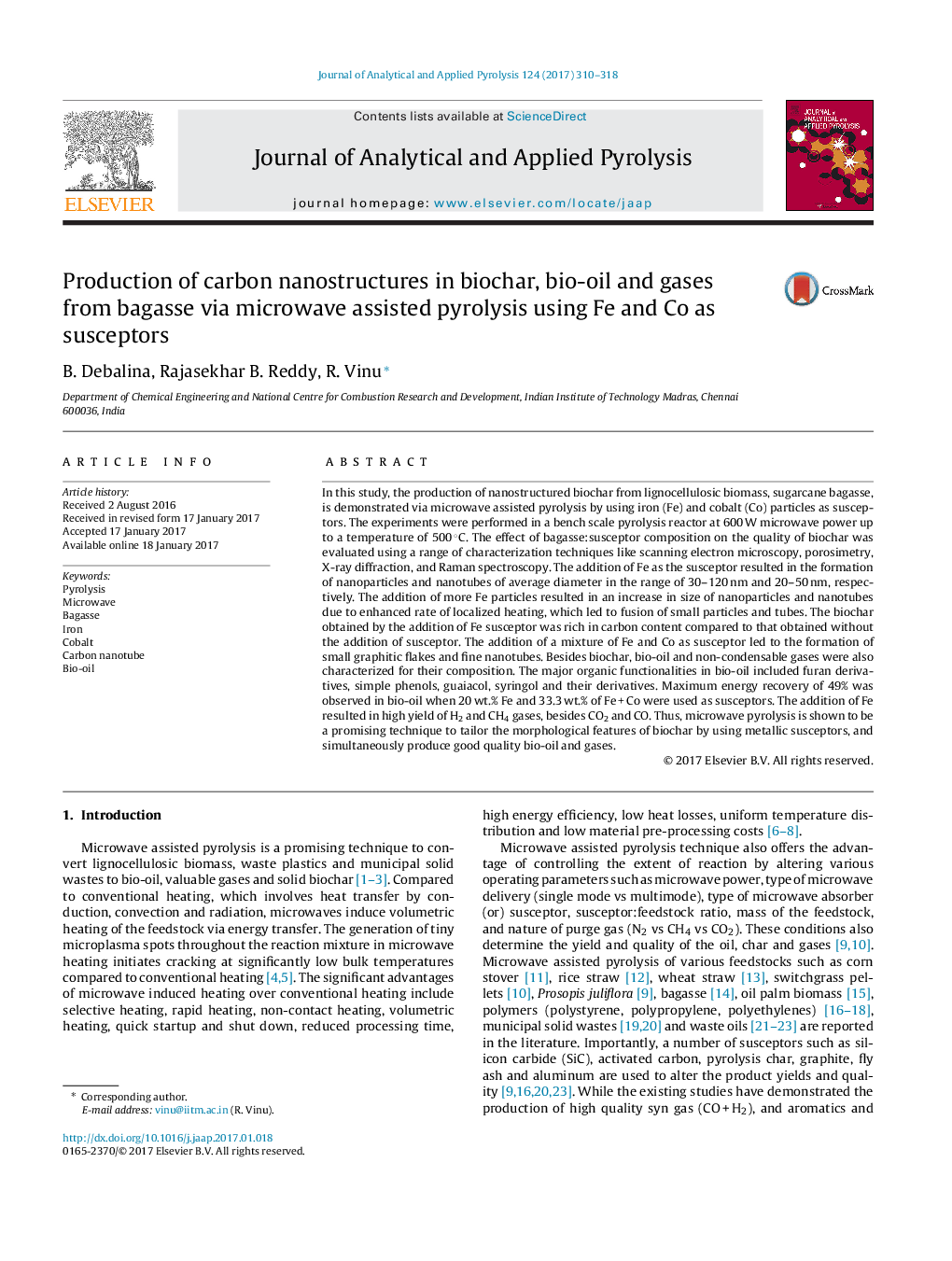| Article ID | Journal | Published Year | Pages | File Type |
|---|---|---|---|---|
| 5134599 | Journal of Analytical and Applied Pyrolysis | 2017 | 9 Pages |
â¢Microwave pyrolysis of bagasse is conducted with and without Fe and Co as susceptor.â¢Bio-oil, biochar and gases were characterized using different techniques.â¢Fe improved the carbon content in char and yielded significant amount of H2.â¢The addition of Fe and Co promoted the formation of carbon nano tubes.â¢Bio-oil was rich in furan derivatives, simple phenols, guaiacols and syringols.
In this study, the production of nanostructured biochar from lignocellulosic biomass, sugarcane bagasse, is demonstrated via microwave assisted pyrolysis by using iron (Fe) and cobalt (Co) particles as susceptors. The experiments were performed in a bench scale pyrolysis reactor at 600 W microwave power up to a temperature of 500 °C. The effect of bagasse:susceptor composition on the quality of biochar was evaluated using a range of characterization techniques like scanning electron microscopy, porosimetry, X-ray diffraction, and Raman spectroscopy. The addition of Fe as the susceptor resulted in the formation of nanoparticles and nanotubes of average diameter in the range of 30-120 nm and 20-50 nm, respectively. The addition of more Fe particles resulted in an increase in size of nanoparticles and nanotubes due to enhanced rate of localized heating, which led to fusion of small particles and tubes. The biochar obtained by the addition of Fe susceptor was rich in carbon content compared to that obtained without the addition of susceptor. The addition of a mixture of Fe and Co as susceptor led to the formation of small graphitic flakes and fine nanotubes. Besides biochar, bio-oil and non-condensable gases were also characterized for their composition. The major organic functionalities in bio-oil included furan derivatives, simple phenols, guaiacol, syringol and their derivatives. Maximum energy recovery of 49% was observed in bio-oil when 20 wt.% Fe and 33.3 wt.% of Fe + Co were used as susceptors. The addition of Fe resulted in high yield of H2 and CH4 gases, besides CO2 and CO. Thus, microwave pyrolysis is shown to be a promising technique to tailor the morphological features of biochar by using metallic susceptors, and simultaneously produce good quality bio-oil and gases.
Graphical abstractDownload high-res image (247KB)Download full-size image
